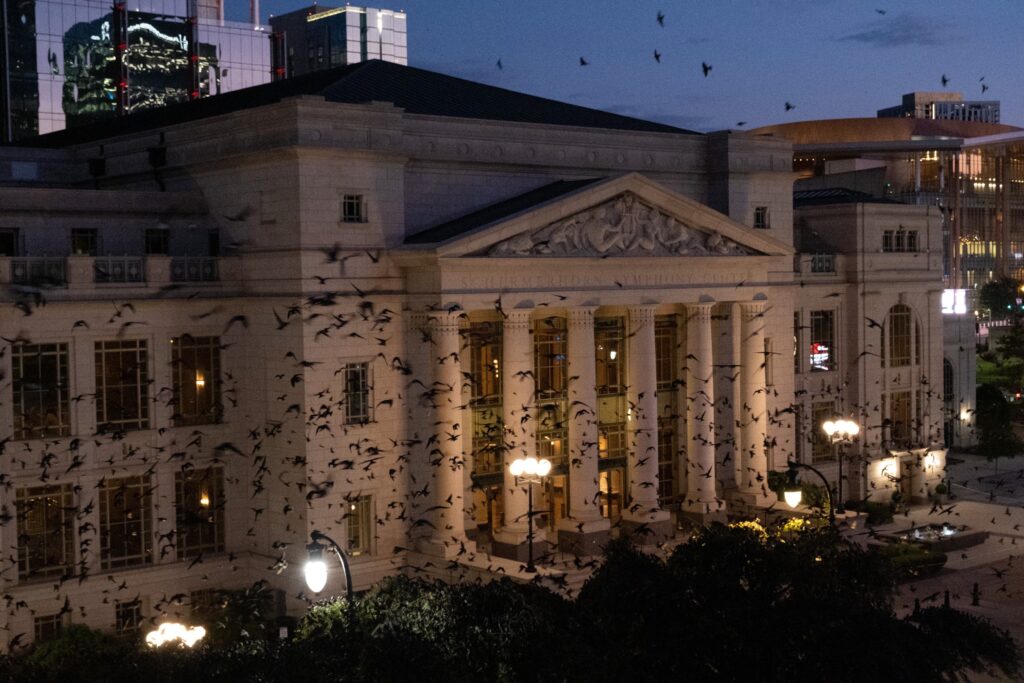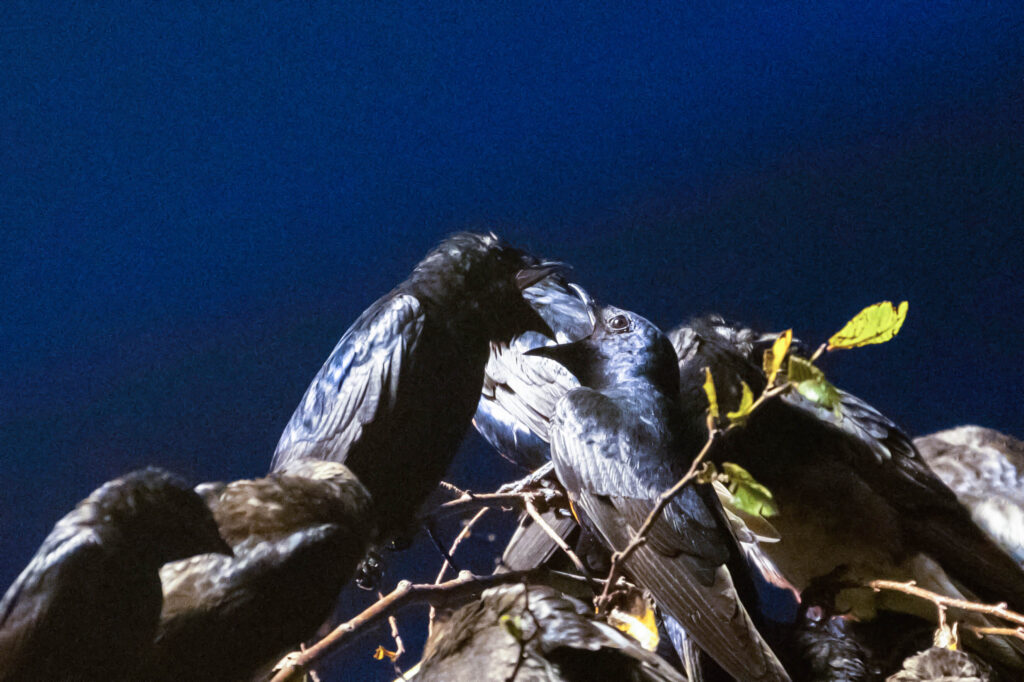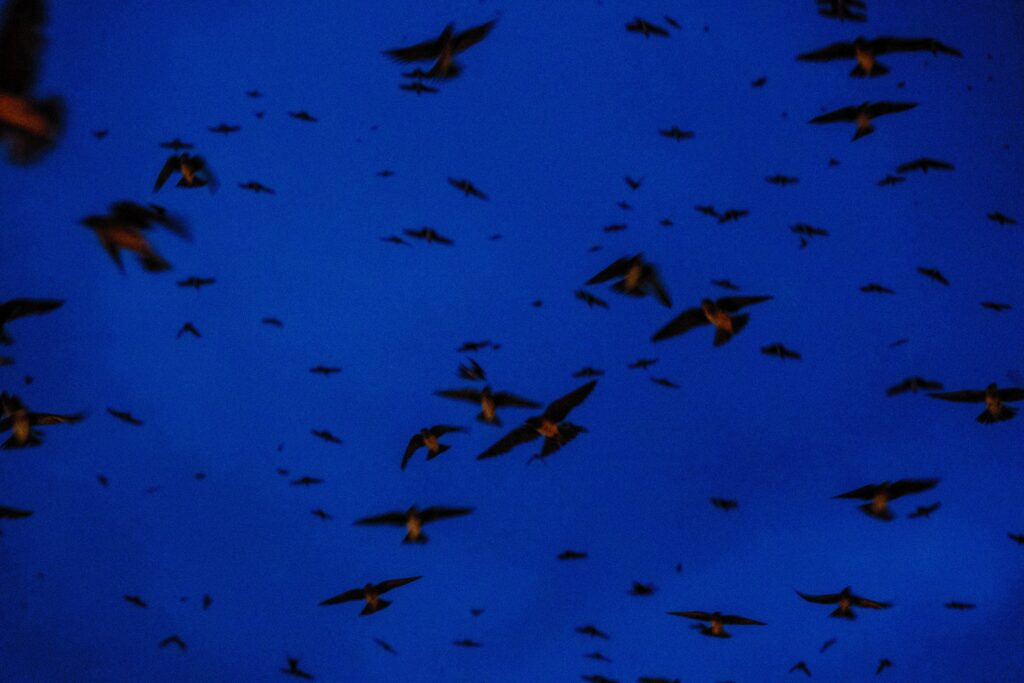
Last summer, thousands of purplish, sparkly birds descended in tight, spinning columns onto the branches of 10 trees by the Schermerhorn Symphony Center. This was their home away from home, a safe place for them to assemble before migrating to South America, and also a spectacle for passersby in recent years.
But the show is over.
Metro Nashville plans to clear these trees to permanently prevent the purple martins from returning, two years after the Nashville Symphony chopped 31 trees on its campus.
 Caroline Eggers WPLN News
Caroline Eggers WPLN NewsAfter high costs and damages from a purple martin roost, the Nashville Symphony cut about 30 of its trees on May 17, 2022.
The Nashville Symphony originally planned to cut all 41 trees, before tree advocates identified that 10 trees were owned by the metro government. The resulting meetings between city officials and conservationists ultimately led to Nashville joining the Urban Bird Treaty program, as a commitment to conserve bird habitat and protect migratory birds.
“The city seemed so proud of their Urban Bird Treaty status,” said Joe Siegrist, president of the Purple Martin Conservation Association. But less than a year later, the city “made this decision that’s almost decidedly anti-bird.”
Purple martin populations are declining, largely due to deforestation, mercury pollution in their Amazonian breeding grounds and pesticides.
The little songbirds fly from North America as far south as Brazil every year, and finding safe urban stopping points along the way can be challenging. Purple martins have been trying to roost in Nashville for over a decade, and some previous resting spots have also been chopped down.
“The Nashville roost has been bounced around so many times,” Siegrist said. “They’re constantly being chased off of what they’re deeming as the safest location.”
He warned that the city is setting a precedent that could impede conservation work.


Since the roost first arrived downtown in 2020, the Nashville Symphony has said that the bird droppings have caused significant costs for cleanup at the symphony center.
City officials say they are cutting the remaining trees adjacent to the center to avoid property damage, save money and be “protective of human health” — though there is no research that indicates that purple martins pose any health risks to humans.
“The administration sought a more complete solution and considered all the data points and feedback from partners that had been gathered in recent years to reach the decision,” Alex Apple, spokesperson for Mayor O’Connell’s office, said in an email.
In the past few years, the purple martins inspired scientific research, jaw-dropping reactions and visits from out-of-state tourists.
“This phenomenon is the kind of thing that the great composers were inspired by,” local bird photographer Graham Gerdeman told WPLN last year. “This is one of the most spectacular displays of wildlife in North America, and the fact that it’s happening … in the middle of honky-tonk land is fascinating.”

